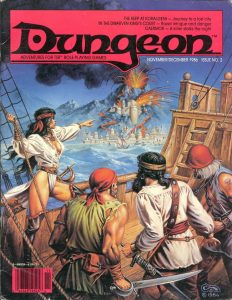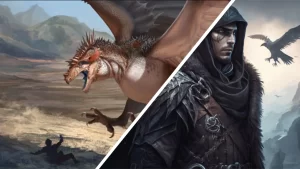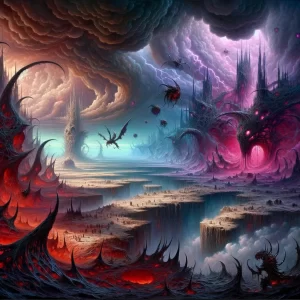
Navigating the ever-expanding realms of tabletop role-playing games, enthusiasts frequently encounter two titans of the industry: Dungeons & Dragons 5th Edition (D&D 5e) and Pathfinder 2nd Edition (Pathfinder 2e). Both games have evolved from a shared origin-D&D's earlier editions-yet each has charted a distinct path that reflects its unique philosophy and gameplay style. This article embarks on an exploratory journey into the less apparent, yet profoundly impactful, differences between these two systems, revealing how subtle mechanics and design philosophies influence the player experience.
Chapter 1: Philosophy of Rules
At their core, Pathfinder 2e and D&D 5e embody fundamentally different philosophies regarding rule complexity and player choice. Pathfinder 2e adopts a "complexity by design" approach, offering an intricate array of options to customize characters. Its rules are detailed, aiming to provide precise guidelines for every conceivable scenario a player might encounter. This richness allows for nuanced character customization that appeals to players who enjoy depth and detailed mechanics.
Contrastingly, D&D 5e embraces a more streamlined philosophy. Its rules are intentionally simplified, promoting ease of play and faster pacing. The system is designed to be accessible, focusing on broad strokes rather than meticulous detail. This approach caters to both newcomers and veterans seeking a straightforward, flexible gameplay experience that emphasizes storytelling over mechanics.
Chapter 2: Character Creation and Progression
Pathfinder 2e's character creation is a testament to its commitment to complexity and choice. Players can select from a vast array of ancestries, backgrounds, classes, and feats, each adding layers to a character's capabilities and narrative. This system encourages meticulous planning and optimization, rewarding players who think strategically about their character's progression across levels.
In D&D 5e, character creation is more streamlined. While it offers fewer options than Pathfinder 2e, each choice has significant impact on gameplay, making character creation less daunting for beginners. The emphasis is on creating a character quickly and jumping into the adventure, making it ideal for players who prefer to develop their characters through role-playing rather than through complex pre-game planning.

Chapter 3: Combat Dynamics
Combat in Pathfinder 2e is characterized by its tactical depth. The game employs a three-action system per turn, allowing players to mix and match actions such as moving, attacking, and using special abilities. This system provides a tactical playground for players who enjoy planning and executing complex strategies in battle.
D&D 5e's combat system is more straightforward. Each player has one action, one bonus action, and a possible reaction, which streamlines decision-making and speeds up gameplay. This simplicity helps maintain a brisk, narrative-driven pacing in combat, appealing to players who prefer high adventure and story over tactical depth.
Chapter 4: Skill Systems and Role-playing
Pathfinder 2e offers a robust skill system, with detailed rules that govern a variety of actions characters can undertake, from the mundane to the extraordinary. This comprehensive approach provides a framework for role-playing that heavily integrates a character's skills and abilities, facilitating a gameplay style where mechanics deeply influence narrative.
D&D 5e adopts a more flexible skill system, where the outcome of skill checks is more open to interpretation by the Dungeon Master. This flexibility allows the DM more control to shape the narrative flow, enabling a more dynamic storytelling experience that can adapt to the players' choices and creative input.
Chapter 5: Magic and Spellcasting
Magic in Pathfinder 2e is extensive, with spells categorized into schools and levels, and a detailed framework dictating how spells are cast and what effects they produce. This complexity allows for strategic use of magic in both combat and problem-solving scenarios, providing a layer of depth that magic-oriented players appreciate.
D&D 5e simplifies spellcasting to make it more accessible. The system focuses on the versatility of spells through their descriptions and effects rather than through rigid categorization. This approach makes magic feel more intuitive and integrated into the narrative, suitable for players who view spellcasting as a narrative tool rather than a tactical one.
Pathfinder 2e and D&D 5e, while springing from the same roots, cater to distinctly different player bases through their approach to rules complexity, character creation, combat, skill use, and magic. Understanding these differences not only helps players choose the game that best suits their style but also enriches the role-playing experience by highlighting the unique strengths each game has to offer. As players continue to explore these rich, fantastical worlds, they do so equipped with the knowledge that each game offers a unique gateway into the boundless realms of imagination.
Chapter 6: Grit and Realism in Gameplay
Dungeons & Dragons 5th Edition (D&D 5e) and Pathfinder 2nd Edition (Pathfinder 2e) both offer mechanisms to add grit and realism into their respective gameplay, but they do so in markedly different ways that reflect their underlying design philosophies.
Pathfinder 2e: A Closer Look at Grit and Detail
Pathfinder 2e's granularity is most evident in its approach to combat and survival elements, where the game mechanics can be as unforgiving as the narratives they support. This system extends beyond simple hit points and damage; it includes complex conditions like Wounded, Drained, or Fatigued, each affecting gameplay in substantial ways. These conditions simulate physical and mental tolls, pushing players to strategize resource management carefully, be it hit points, spells, or even basic necessities like food and rest.
The game's focus on detail extends to its equipment and encumbrance system. Every item has a specific weight, and managing load becomes a crucial aspect of character preparation and mobility. This system compels players to make strategic decisions about what they carry into dungeons or battles, realistically portraying the logistics of adventuring.
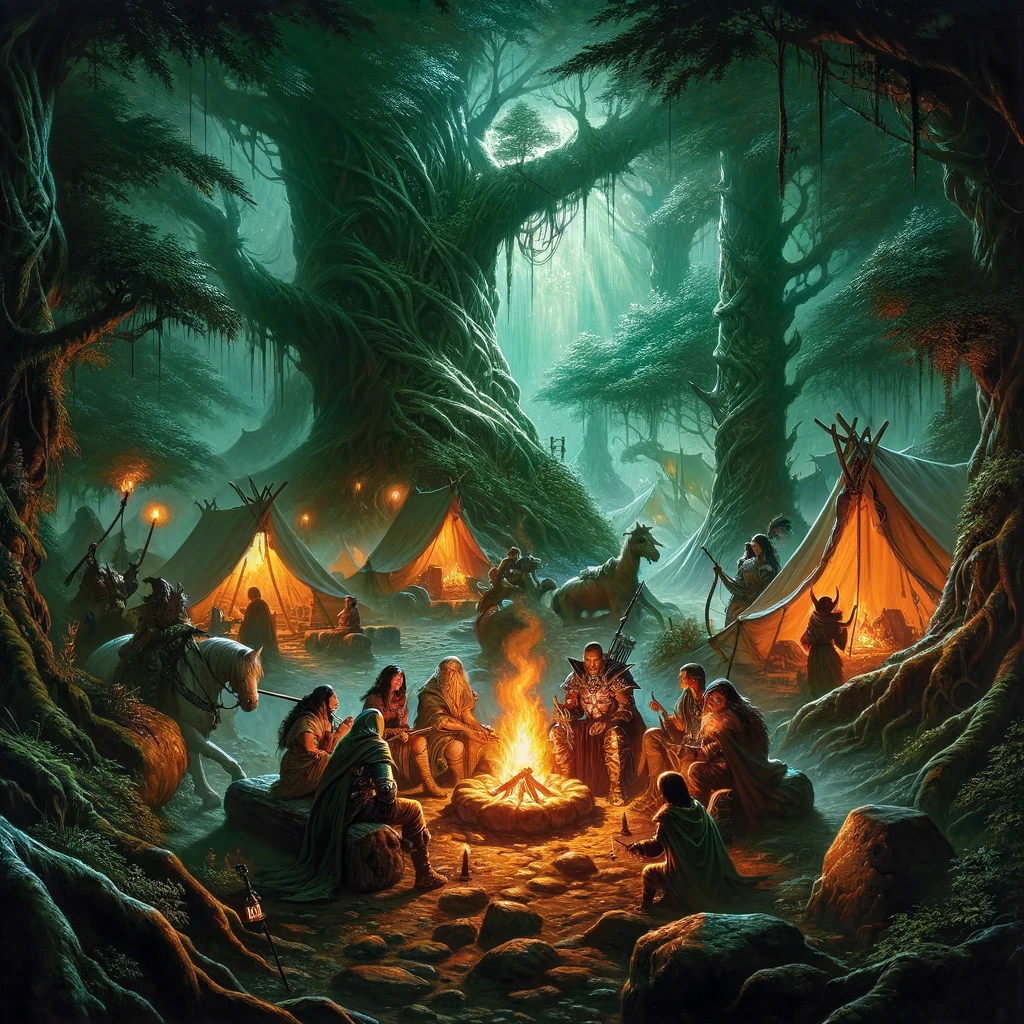
D&D 5e: Streamlined Realism
D&D 5e approaches grit and realism not through layers of complexity but through the flexibility of its rules, allowing Dungeon Masters (DMs) to tailor the realism of their campaigns. Conditions and exhaustion exist in D&D 5e, but they are streamlined for ease of use, ensuring that gameplay remains fast and fluid without sacrificing depth. Exhaustion, for example, is a scalable condition that progressively worsens, effectively simulating physical degradation from strenuous activities or harsh environments.
The equipment system in D&D 5e is less cumbersome than Pathfinder 2e's, focusing on broader categories and simpler management. This approach reduces downtime spent on micromanagement, promoting a game flow that keeps the narrative forefront. However, DMs are encouraged to impose realistic challenges through narrative means, such as describing the wearing down of gear or the impact of weather on travel, rather than through strict mechanical penalties.
Chapter 7: Moral Ambiguities and Ethical Dilemmas
Both games offer rich grounds for exploring moral ambiguities and ethical dilemmas, though their methodologies differ, reflecting their core design ethos.
Pathfinder 2e: Ethical Complexity in a Rule-Heavy Framework
Pathfinder 2e's detailed rule set provides a solid foundation for embedding ethical dilemmas directly into gameplay mechanics. Alignment plays a crucial role, influencing not only the narrative arcs but also interactions with spells, artifacts, and divine powers. This integration allows for a nuanced exploration of morality, where player decisions can lead to complex consequences, mirrored by both the story and the game's mechanics.
Furthermore, Pathfinder 2e's extensive use of factions and reputation systems embeds characters deeper into the political and moral fabric of the game world. Players must navigate the expectations and prejudices of different groups, making choices that can have long-term repercussions on their standing and what resources or allies are available to them.
D&D 5e: Narrative-Driven Moral Exploration
In D&D 5e, moral complexities are typically explored through scenario-based role-playing, driven by the DM's narrative design. The simpler alignment system and more flexible rules mean that ethical dilemmas are often less about mechanical consequences and more about storytelling and character development. This setup encourages players to delve into moral considerations based on personal or party ethos, rather than external mechanical pressures.
The DM's ability to adapt the game dynamically means that moral choices can lead to immediate and profound narrative shifts, making the story deeply personal and immediate. This can be particularly effective in campaigns where character backstories and personal goals are tightly integrated into the world-building.
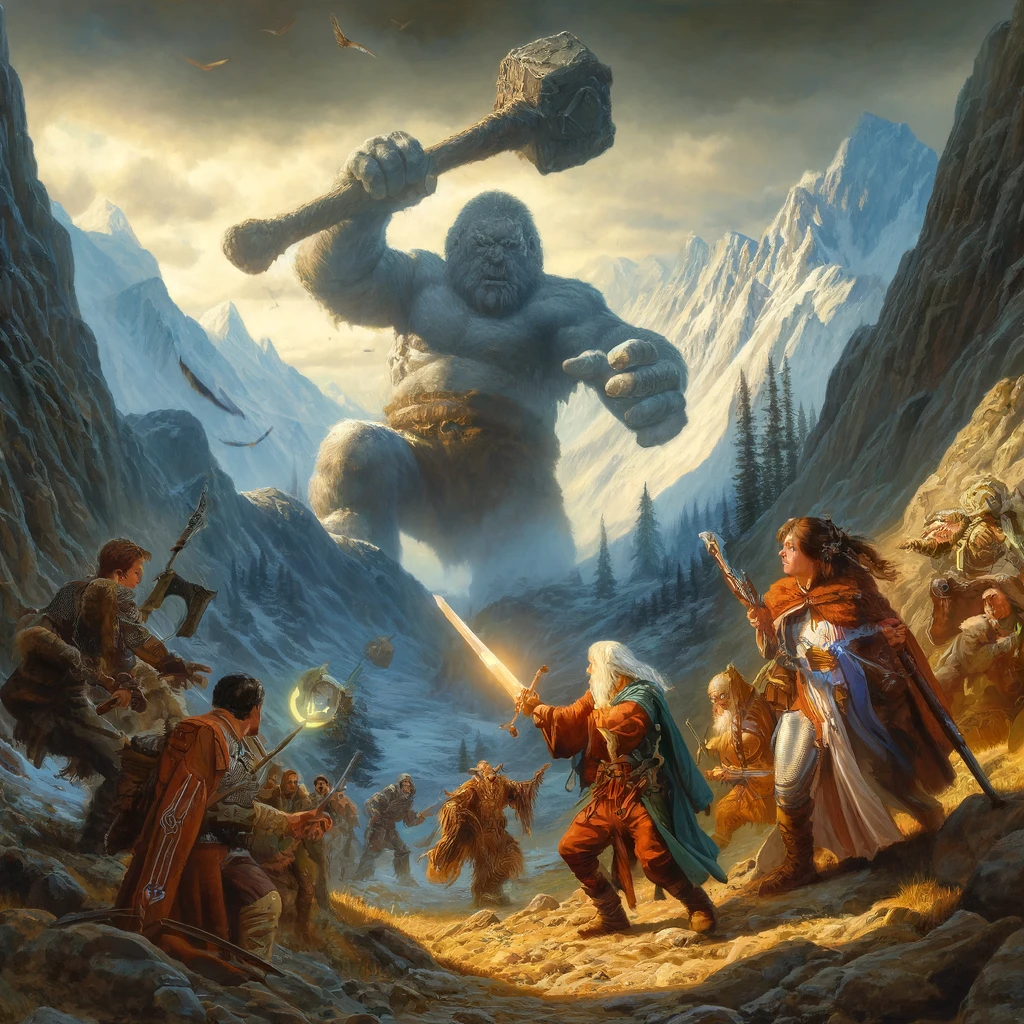
Chapter 8: The Role of the Dungeon Master
The role of the Dungeon Master (DM) varies significantly between Pathfinder 2e and D&D 5e, influenced heavily by the respective game's approach to rules and storytelling.
Pathfinder 2e: The Arbiter of Complexity
In Pathfinder 2e, the DM acts as an arbiter of the rules, needing a deep understanding of the game's mechanics to manage the complex interactions and scenarios that arise. This role requires precision and readiness to reference multiple rule sets to ensure that gameplay remains consistent and fair. The DM's challenge is to maintain the balance between upholding the detailed rules and keeping the game engaging and dynamic.
D&D 5e: The Narrative Guide
In D&D 5e, the DM has more leeway to focus on storytelling and improvisation, with less need to constantly manage intricate rule details. The streamlined mechanics of D&D 5e allow the DM to adapt and mold the game on the fly, focusing on crafting memorable experiences and responding to player creativity. The DM's role is more about guiding the narrative and less about strict adherence to complex rule sets.
Final Thoughts
The writing does not specifically favor one game over the other in terms of overall "best lighting." Instead, it presents a balanced view that highlights the unique strengths and appeals of both Pathfinder 2e and Dungeons & Dragons 5e. Each game is shown in a positive light in different respects:
Pathfinder 2e is portrayed as having a rich, detailed system that offers deep customization and complex tactical gameplay. It appeals to players who enjoy thorough mechanics, detailed character creation, and a robust rule set that allows for nuanced gameplay and tactical depth.
Dungeons & Dragons 5e is described as more streamlined and accessible, focusing on simplicity and speed to enhance narrative flow and ease of play. It is ideal for players who prefer a more straightforward system that facilitates quick gameplay and focuses on storytelling and character development without getting bogged down by complex rules.
Each description is designed to appeal to different types of players based on their preferences in gameplay style, complexity, and the role-playing experience they are seeking. This approach ensures that both games are presented positively and accurately, reflecting their intended audiences and design philosophies.



